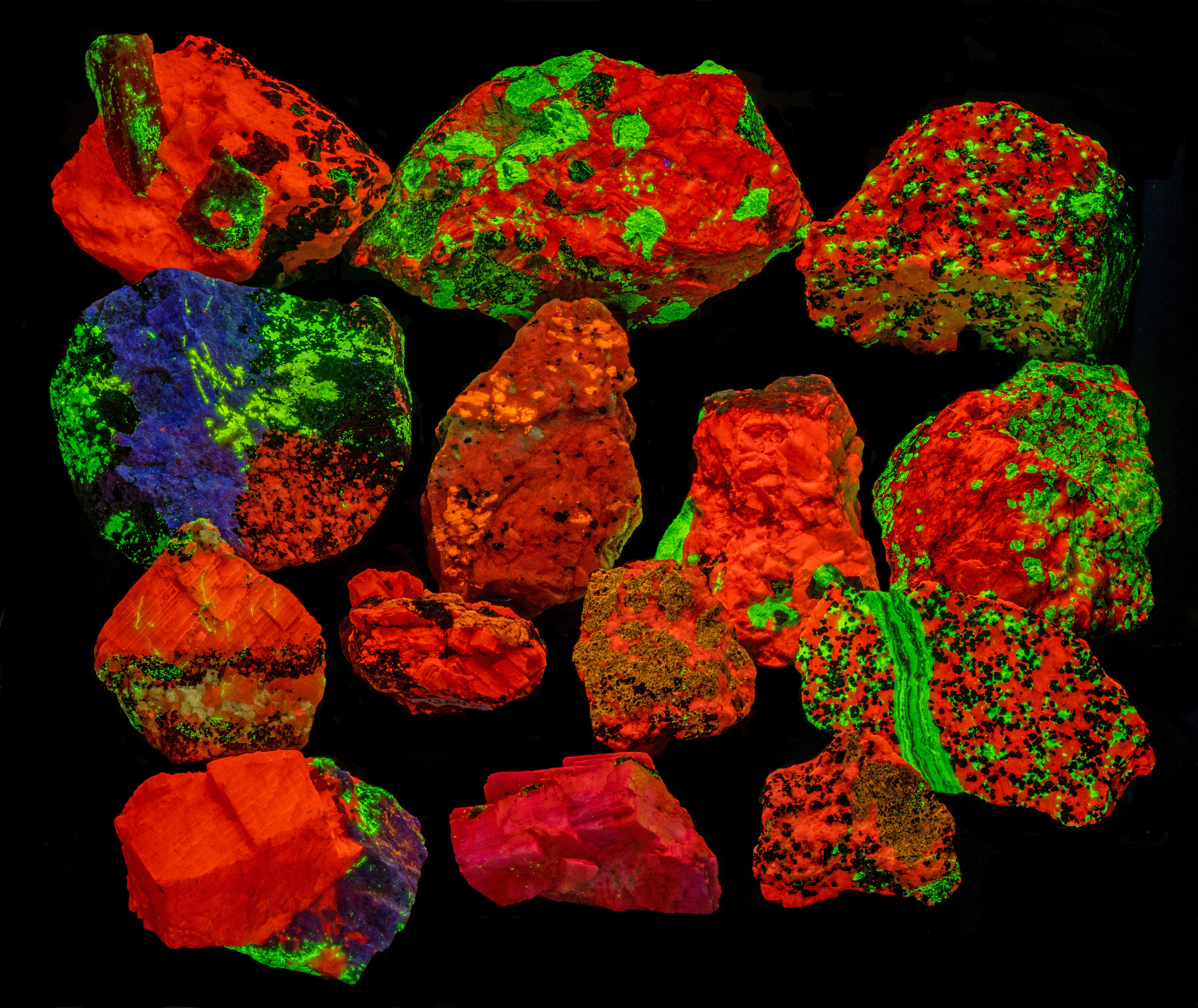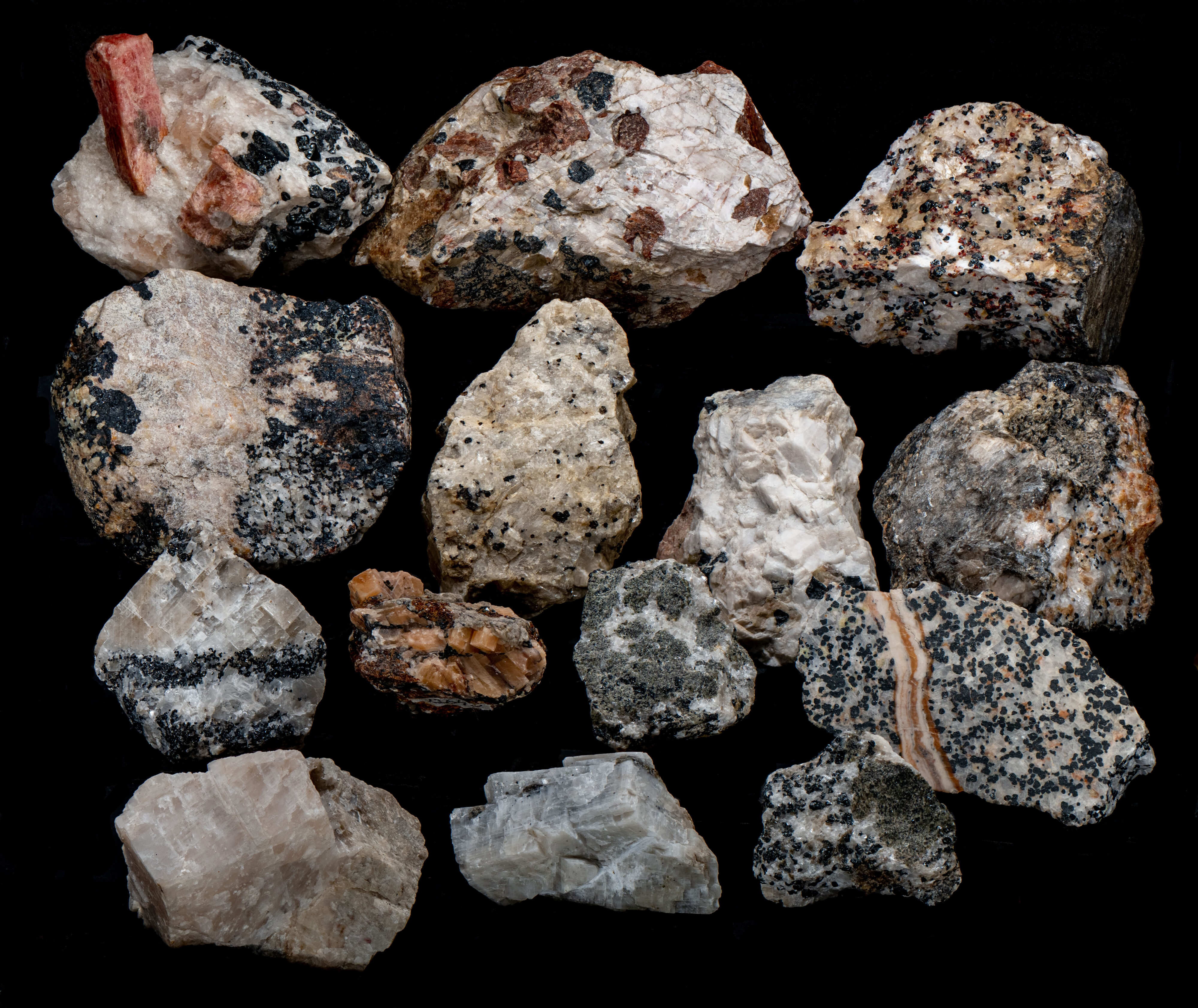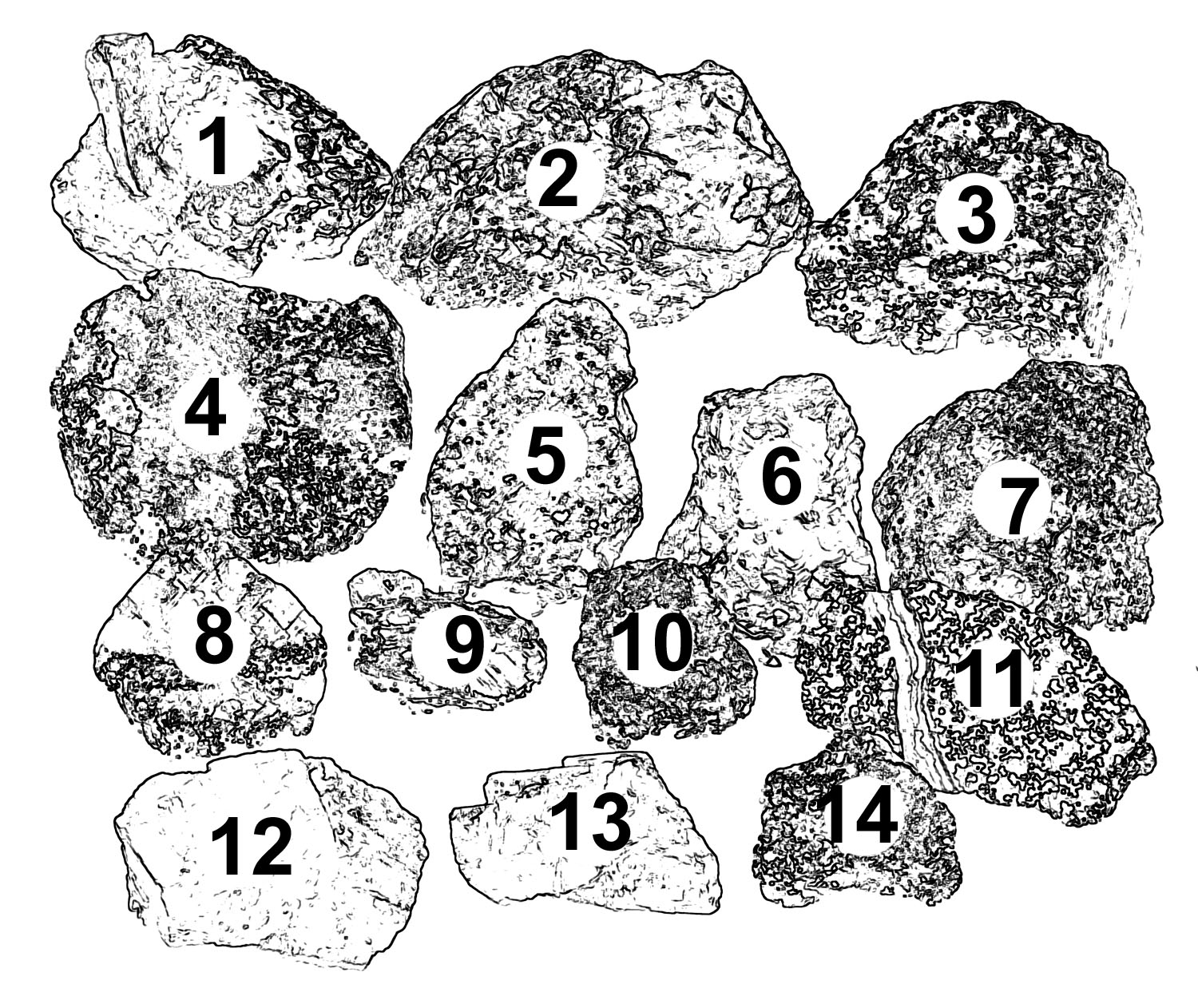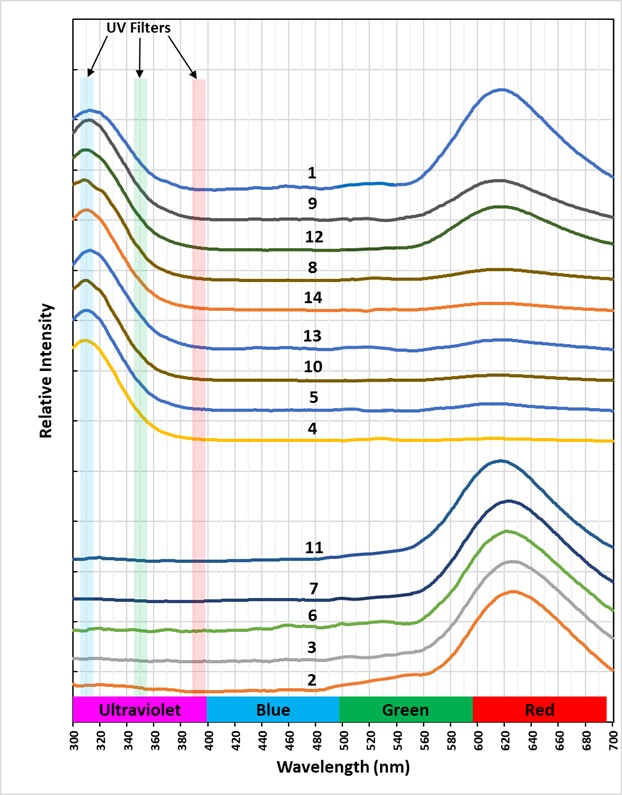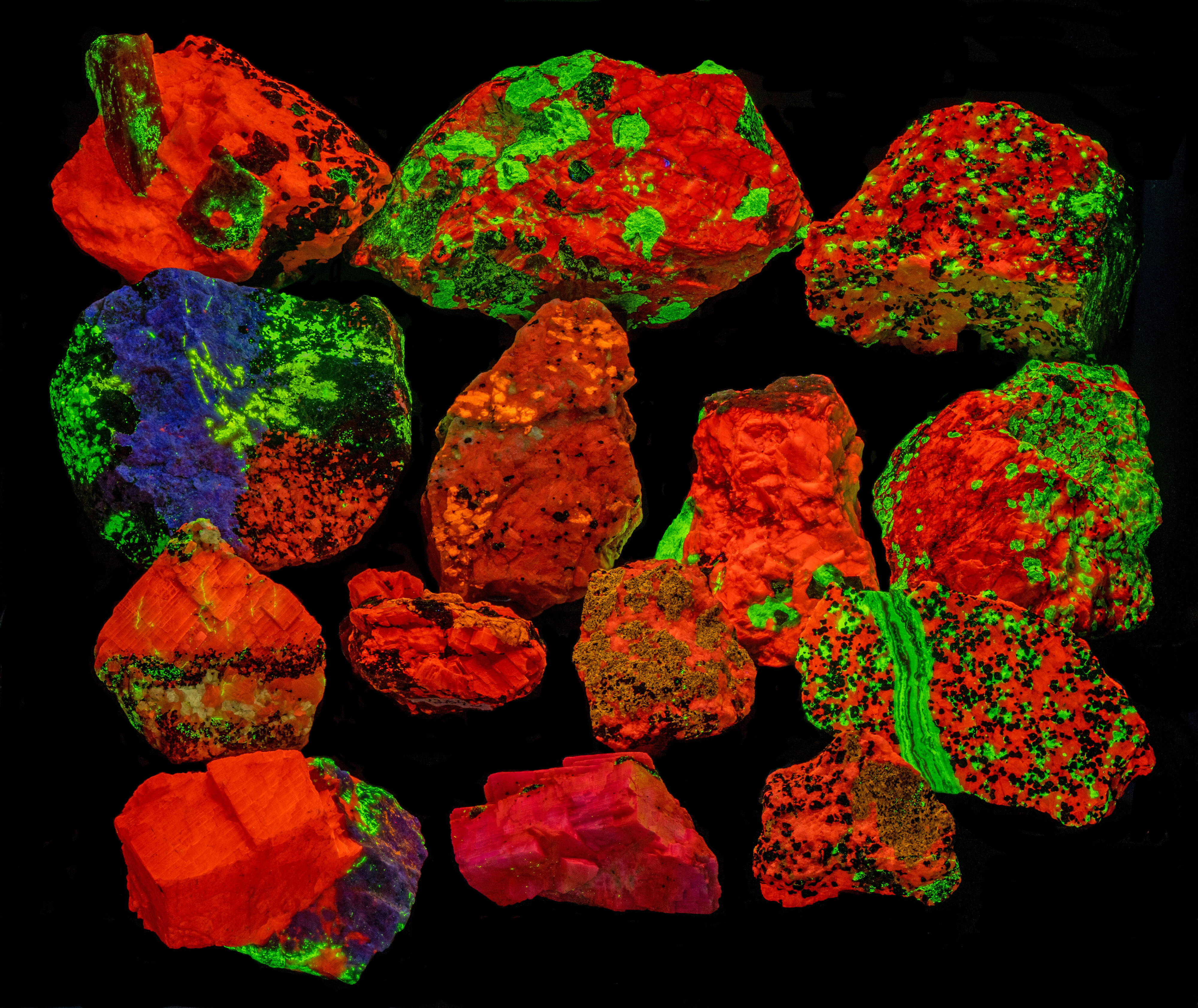Ultraviolet Fluorescence of Calcite from Franklin, New Jersey
Contributed by: Michael Crawford
Date: Jul 30th, 2025
Locality: Franklin, Sussex County, New Jersey, USA (See on Mindat)
Description:
The images show a display of specimens that contain calcite from Franklin, Sussex County, New Jersey. The images are a white light image, a true color image of the shortwave fluorescence, and a false color image of the ultraviolet fluorescence. The false color image was created from three 10 nm narrow bandpass filters with peak transmissions at 310nm, 350nm, and 394nm. Black and white images at each ultraviolet wavelength were composited together to make the false color image.
The false color image of ultraviolet fluorescence shows two types of calcite. One calcite type has bluish hue in the false color image. This calcite has a lead activator that causes a fluorescent peak at 310 nm. The plots of emission spectra show this lead-activated ultraviolet fluorescence is generally brighter than the visible orange-red fluorescence. The second type of calcite has little or no ultraviolet fluorescence and appears dark brown in the false color image. The emission spectra of these specimens confirm the lack of fluorescence in the ultraviolet. The visible shortwave fluorescence of all calcites is orange-red. The visible red fluorescence is activated by manganese and its emission spectra is a broad peak with a maximum around 620 nm.
Specimens #4 and #16 contain hardystonite that is strongly fluorescent in the ultraviolet region. Hardystonite appears white in the false color image. Specimen #4 also contains esperite that also has ultraviolet fluorescence. The ultraviolet fluorescent peaks for hardystonite abd esperite are the same and they appear the same in the false color image. Specimens #10 and #14 contain cuspidine that fluoresces in the ultraviolet and appear yellow brown in the false color image.
The specimens with the ultraviolet fluorescence are all associated with minerals (hardystonite, esperite, wollastonite, barite, rhodonite, cuspidine, turneaureite) formed during a hydrothermal event that occurred after the initial deposition of the Franklin ore minerals. Specimens with no ultraviolet fluorescence are calcites formed during the initial formation of the Franklin deposit. More sampling is needed to confirm this explanation of the calcite differences.
1 – Calcite and Rhodonite
2 – Calcite and Willemite
3 – Calcite, Willemite, Zincite, and Franklinite
4 – Calcite, Hardystonite, Esperite, Willemite, and Franklinite
5 – Third Find Wollastonite (Calcite, Wollastonite, Barite)
6 – Calcite and Willemite
7 – Calcite, Willemite, and Franklinite
8 – Calcite and Barite
9 – Calcite, Andradite, and Turneaureite
10 – Calcite and Cuspidine.
11 – Calcite, Franklinite, and Willemite with a Willemite vein
12 – Calcite, Hardystonite, and Willemite
13 – Multiwave Calcite
14 – Calcite, Cuspidine, and Franklinite
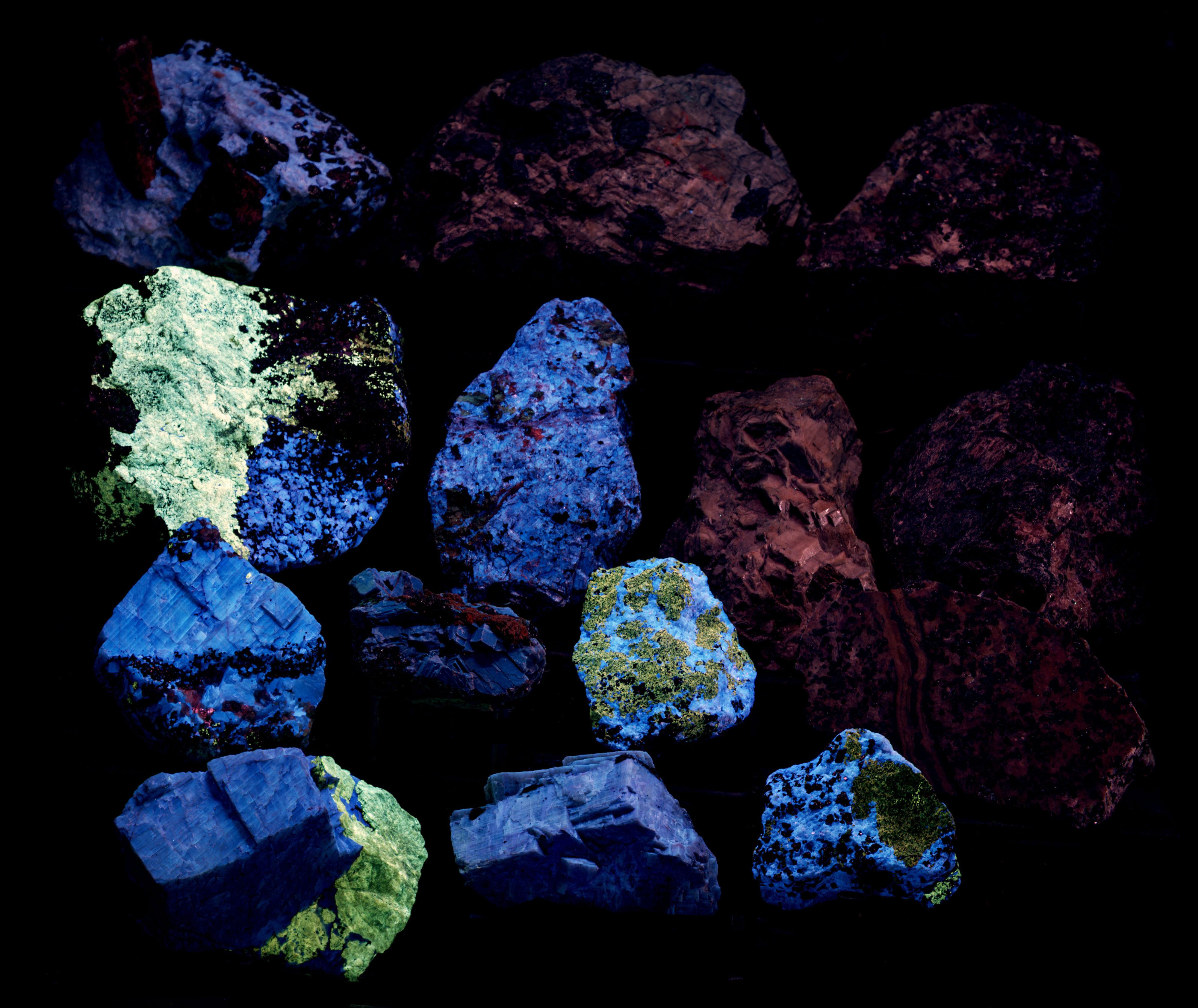
Summary of luminescence responses:
Calcite (Mindat) (RRUFF)
- Fluorescence under Shortwave (255nm LED) UV light: Red

